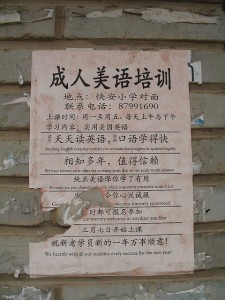Mark Bray and Chad Lykins have just published the definitive current statement on supplementary education in Asia, “Shadow Education -Private Supplementary Tutoring and Its Implications for Policy Makers in Asia” as a book (PDF, available for free) through the Asian Development Bank.
Here’s a paragraph from their introduction that offers a flavour of the book:
Private supplementary tutoring is widely known as shadow education, since it mimics the mainstream. As the content of mainstream education changes, so does the content of the shadow. And as the mainstream grows, so does the shadow. This study shows that shadow education has a long history in parts of the region, but in recent decades it has greatly expanded. In the Republic of Korea nearly 90% of elementary students receive some sort of shadow education; and in Hong Kong, China, about 85% of senior secondary students do so. Figures are equally striking in less prosperous parts of the region. In West Bengal, India, nearly 60% of primary school students receive private supplementary tutoring; and in Kazakhstan a similar proportion of students do so at the senior secondary level. Proportions are lower in other countries, but throughout the region the shadow is spreading and intensifying. (p. X)
Countries covered in the book include: Armenia, Azerbaijan, Bangladesh, Brunei, Cambodia, China, Georgia, Hong Kong, India, Indonesia, Japan, Kazakhstan, Korea, Kyrgyzstan, Laos, Malaysia, Maldives, Mongolia, Myanmar, Nepal, Pakistan, Philippines, Singapore, Sri Lanka, Taipei, Tajikistan, Thailand, Turkmenistan, Uzbekistan, Vietnam.
The report was released just as co-author Mark Bray was awarded was awarded a UNESCO Chair professorship in Comparative Education. Congratulations on the chair and the publication!


